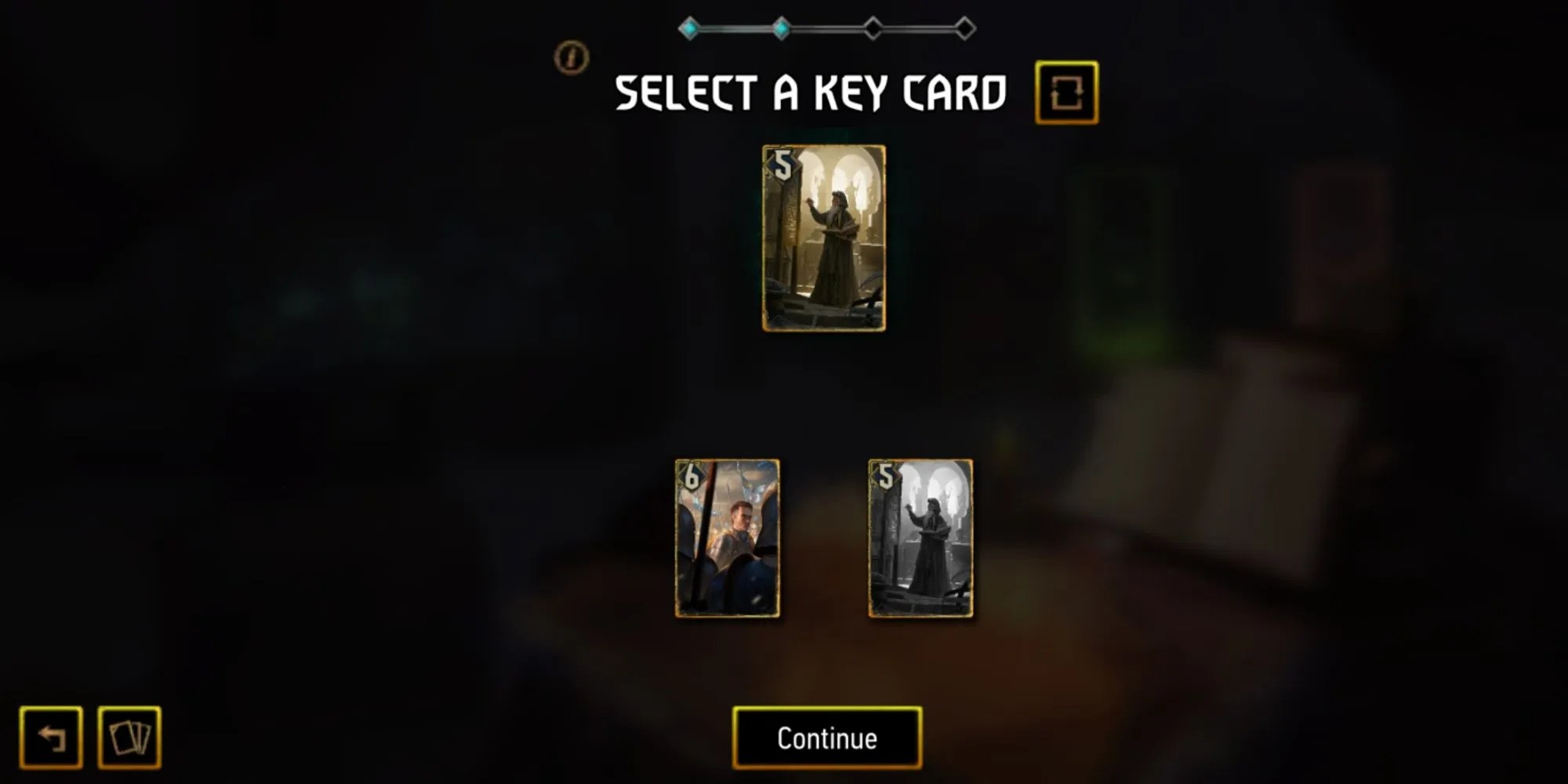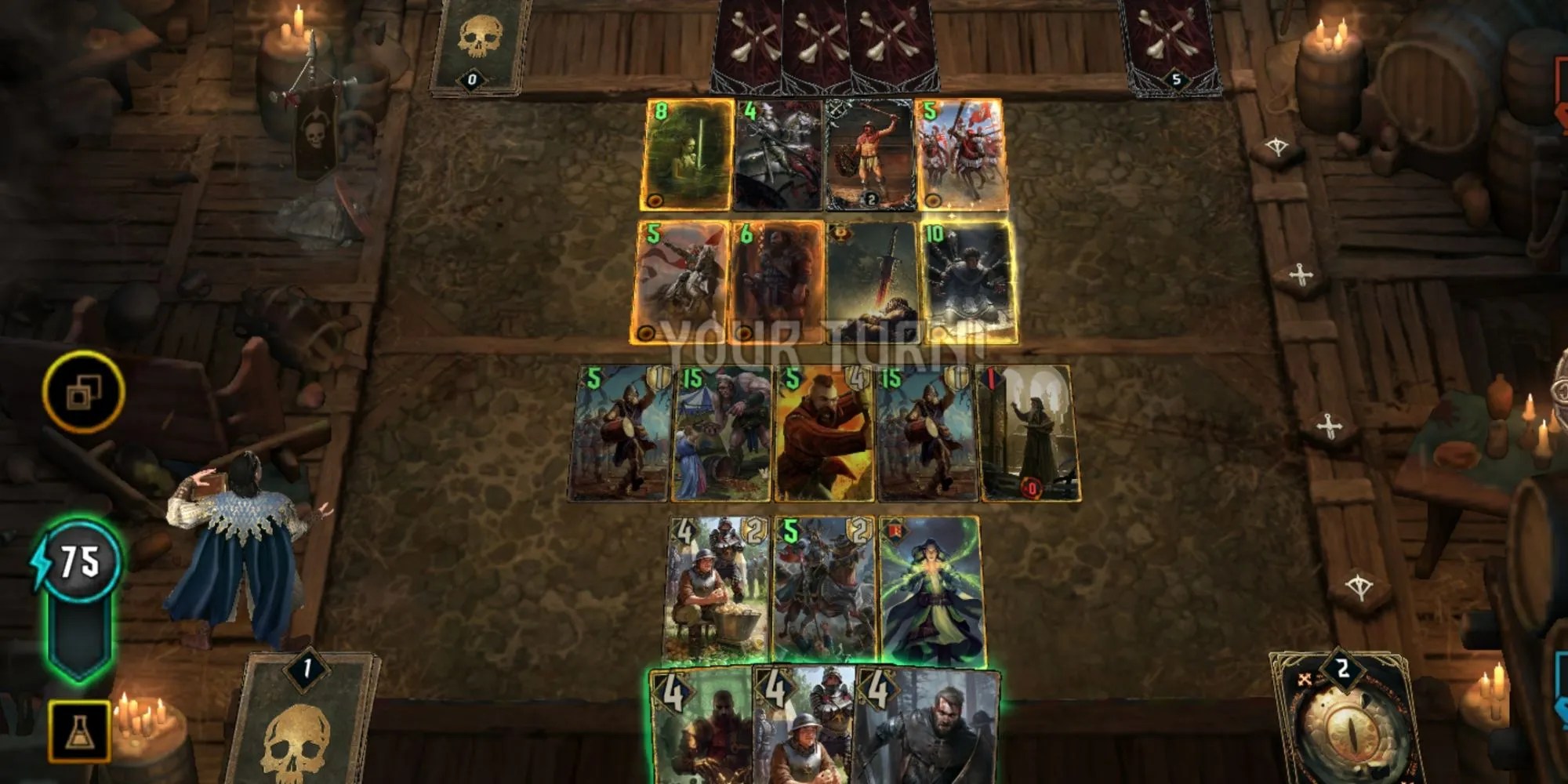Roguelikes have a well-deserved reputation for difficulty. No game about a journey through randomized, monster-infested areas is going to be easy, after all. Add the complexity of deckbuilding on top of that and one is left with a truly fiendish game.
RELATED:Inscryption: How To Get Out Of Dark Room
Gwent: Rogue Magetakes the competitive multiplayer of the originalGwentgame and crafts a unique single-player experience. Instead of isolated matches against human opponents, the player must work their way across a map one battle at a time, making the best deck they can out of randomized rewards. Surviving the gauntlet inGwent: Rogue Mageis no easy feat, but with careful planning and a bit of luck the player may just emerge victorious.
8Plot The Right Path
Every run may end in a boss fight, but that doesn’t mean that the journey there is predetermined.Players who lovedInscryptionwill find this process familiar: some routes lead to battles, others treasure, and still others to difficult choices with consequences that are even more difficult to bear.
It’s important to take one’s present circumstances and overall strategy into consideration when picking a route. Battles are risky and may exhaust energy, but offer the opportunity to get vital cards. Sometimes diving headfirst into a string of tough battles is exactly what the player needs to give themselves the best chance of success.

7Understand Card Synergies
Each deck isGwent: Rogue Mageis built around a different concept. Bulwark, the starting deck, is all about boosting creatures, making them more powerful over time. Cards can be strong on their own, but their true potential shines through when the player begins to understand card synergy.
RELATED:Slay The Spire: The Best Relics For The Defect Class
Synergistic cards work better together.Tridam Infantry deals 1 damage to a random enemy every time it’s boosted. That’s nice on its own, but paired with Temerian Drummer (which boosts the card to its right every turn) Tridam Infantry turns into an automatic damage engine.Rogue Mageis full of such synergies. Indeed, the best decks are built around them, and understanding what cards work well together makes a huge difference.
6Remove Cards When Necessary
After winning a battle and during certain events, the player is offered the chance to either add a new card to their deck or remove one from it. It’s easy to think that taking a card is always the right option. After all, having more cards means more options, which can only be a good thing, right?
The problem is that too many cards means a bloated deck that’s slow and hard to create combos with. Even ifmany of the cards within have good synergy,they won’t have a chance to show it if other, less helpful cards keep getting in the way. Knowing when to take a card, and when (and what) to remove, is tricky, but as the player’s game sense gets better they’ll find themselves running leaner, more efficient decks.

5Build Around The Key Card
Having the player move around a map isn’t the only way thatRogue Magediffers fromGwent.At the beginning of the run, the player must choose one of three key cards for their deck. These cards have effects that are unique and powerful enough that they can indeed be key for surviving a run.
RELATED:Inscryption: The Best Boons
Smart players willbuild their deck around their choice of key cardrather than picking the key card as an afterthought. Key cards play into the strengths of their respective deck types, and it’s always beneficial to shape one’s strategy from the ground up to be as cohesive as possible. Three decks that are all about boosting may have very different ways of achieving their goal depending on the key card being used.
4Spend Energy Wisely
Energy is the resource the player uses to cast spells, making it valuable regardless of where the player is in their run. The default level of energy is 50 of a possible hundred points, but the starting artifact (Archmage’s Flask) provides an additional 25. Even with 75 to spend, energy goes fast if the player is careless, and few things are worse than being energy-starved at the wrong time.
The player should spend energy wisely,but this doesn’t always mean stingily.Sometimes dumping a bunch of energy at once on spells or in pursuit of a treasure is exactly the right call, butthe player should always consider their circumstances in deckbuilding roguelikes.How long will it be until they can get more? How far away is the boss? The more wisely one spends, the more matches one will win.

3Be Ready For Big Swings
Because of how card combos and synergy work, matches inRogue Mageare prone to massive shifts in points. Just when winning seems a certainty, the enemy can catapult ahead and claim victory. That’s not such a big deal in the originalGwent,thanks to the more forgiving three-stage battles in that game. InRogue Mage,it can be a run killer
RELATED:Inscryption: Clock Puzzle Solution
Point swings of 20-30 points or even more are common,especially towards the end of the match when both sides have a ton of cards on the board. It can be tempting to hold energy in reserve for later battles, but by doing so the player risks being swept away by an unexpected combo. Even when spending energy wisely, be willing to spend enough to stay afloat in tough fights.
2Prepare For The Boss, Then Go All Out
The journey to the boss can be a fraught one, laden with fights and decisions that can make or break the run before the player even gets to the big baddie at the end. The run isn’t over until the boss is dead, so every move made andevery card draftedshould be in the name of getting to that fight and closing the deal.
Pick cards and treasures that will provide the best chance of surviving the final battle.Save energy early on, and be prepared to spend it aggressively against the boss. A boss battle is no time for hesitancy. The player will need to pull out all the stops, most likely casting spells on every single turn, if they’re going to have a chance of beating a giant ice dragon or equally terrifying foe.

1Experiment With Different Builds
The variety of different cards, treasures, and artifacts inRogue Magemean there’s plenty of variety in deckbuilding and strategy. Despite this, it’s easy to find a favorite strategy or card combo and stick with it, using it over and over again instead of trying new combinations.
Experimentation can be scary, but it’s one of the best parts of deckbuilding games.Playing with new cards and artifacts might mean losing a couple (or a couple dozen) times, but the end result is a player who is much more knowledgeable about what strategies do and don’t work. Test different builds and ideas, even those that seem doomed to failure. Sometimes it’s the stupid ideas that turn out to be the smartest.

Gwent: Rogue Mageis available for PC, Android, and iOS.
MORE:Gwent: Rogue Mage Introduces Players To A New Side Of The Witcher World


